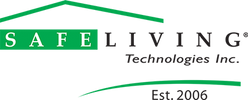EMF FAQ
Which EMR measuring device is best for me? Where do I start?
Before purchasing shielding material, it is best to assess your environment for both EMF and RF radiation. For best accuracy, we recommend one dedicated device for EMF measurements, and one dedicated device for RF measurements. A list of kits with both types of meters may be found here.
The choice in meter depends on how accurately you want to be able to measure RF and EMF sources. Generally, more expensive models offer higher sensitivity (i.e. detecting lower and higher measurement values), and extended frequency ranges.
Which shielding material is best for me?
It often depends on the application, practicality in your environment, and budget. Viewing the product specification sheets will help to inform what types of applications may be best, and what range of frequencies are shielded.
Do I need to ground shielding materials?
Grounding of shielding materials is done to reduce nearby AC electric fields. It is also strongly recommended to prevent any chance of electrical shock, in the rare chance a live wire makes contact with the material. For example, this can happen if drilling into the wall, and accidentally striking a live wire. Grounding is recommended if the shielding material is applied to surfaces that have live wiring running behind.
What are sources of AC electromagnetic fields?
More information may be found here.
What are sources of radio frequency/microwave radiation?
More information may be found here.
What are sources of dirty electricity / MEP?
Common sources include:
- dimmer switches
- compact fluorescent lamps (CFLs), dimmable LEDs and halogen lights
- Switched mode power supplies (e.g. AC-to-DC adapters for many devices)
- Variable speed motors (e.g. energy-efficient appliances, front load washing machines)
- Solar and inverter charging systems
I installed RF shielding material and I do not feel/see a change or I feel worse. Why?
- Please be aware a total enclosure of RF shielding material is often required to achieve the maximum reduction listed on the product specification sheets. Assuming all interior and local RF sources have been addressed and/or eliminated, this may require mitigation materials on other areas (e.g. ceilings, walls, floors, doorways) for exterior RF sources.
- If you have only shielded one or two surfaces, it is possible RF can be entering from the other side of the measuring space, including floors and ceilings.
- Sometimes, the RF analyzer may not be sensitive enough to measure the new results (i.e. detecting and registering lower measurement values).
- If available, using the sound signature analysis feature on an RF analyzer can assist in identifying RF sources.
I installed RF shielding material and still have bars on my cellphone, why?
It is very difficult to quantify RF with bars on a cellphone. All modern cellphones have the ability to adjust their power output in order to compensate for a weak signal, or to conserve battery in a strong signal environment. As you put a cell phone under a shielded enclosure, it recognizes it is not getting a signal any more so it boosts its power output in order to get one. The phone may still show a bar or two because it is transmitting very hard to compensate for the weak signal present. This is why an RF Meter is required, as it can accurately quantify the different levels inside the canopy vs outside the canopy.
RF shielding material is best used at a distance that addresses far-field radiation (i.e. approximately 3 wavelengths away from RF source). Having the shielding material closer than this distance often only addresses near-field RF radiation. This may require finding out the operating frequency of the RF source, in order to find the wavelength.
Can I cover my router with Swiss Shield fabric to block RF radiation?
Please be aware the fabric may not perform to specification by covering a device such as a router. This is because the fabric is designed to be used against far-field radiation. By covering the router (i.e. having the fabric so close), it would only cover near-field radiation. If you decide you still want to cover your router with fabric for your own experimentation purposes, a fabric such as the Swiss Shield Ultima may be considered.
With routers, there are other variables to consider other than the router itself, such as other RF-emitting devices connected to it (e.g. laptop, phones). Same can be said for laptops and all the wireless devices used with it (e.g. wireless mouse, keyboards).
What are considered exposure safe levels?
More information may be found here.
How can I detect / measure 5G?
Most RF meters offered by SLT can measure the low-frequency band (~ 600 - 700 MHz) and mid-frequency band (~ 2.5 - 6 GHz) of 5G technology. Make sure the RF meter has a frequency range that covers these frequencies. Currently, SLT is not yet aware of a consumer-level product that is capable of detecting wireless RF in the 5G high-frequency band (~ 24 - 60 GHz).
How can I shield from 5G?
Generally, standard RF shielding materials (e.g. Yshield paint, RF Foil) may be used. Please note SLT does not yet have test data available in the frequency ranges of 24 GHz and above for products such as the fabrics, mesh, and window films.
Does RF shielding material reflect or absorb frequencies?
RF shielding materials are designed to reflect emissions from RF sources.
My Radio Frequency meter is showing a high reading, but I do not have any wireless sources around me?
It is important to address possibly unknown interior and local RF sources. There is still a possibility of exterior sources influencing the readings (e.g. cell tower, neighbor’s wireless sources).
Can I wear Swiss Shield fabrics as clothing?
SLT does not have specific recommendations for garments, since we have had mixed feedback on the application. The Swiss Shield fabrics work well for RF shielding. Although most of the Swiss Shield fabrics are considered non-conductive, the fabric does have metalized threads, so there is still the possibility of low-frequency AC electric field coupling if the fabric is close enough to your body. Generally, the greater the distance between yourself and the fabric, the better.
SLT normally recommends to focus efforts on areas in the home where you may spend the most time - especially the bedroom - before looking into portable options.
Looking For More EMF FAQ?
Click Here To Book A FREE Consultation with our EMF Experts.


